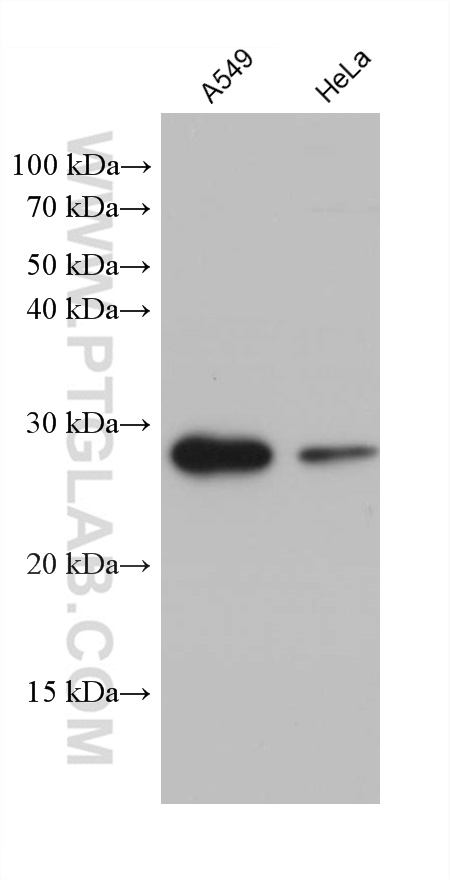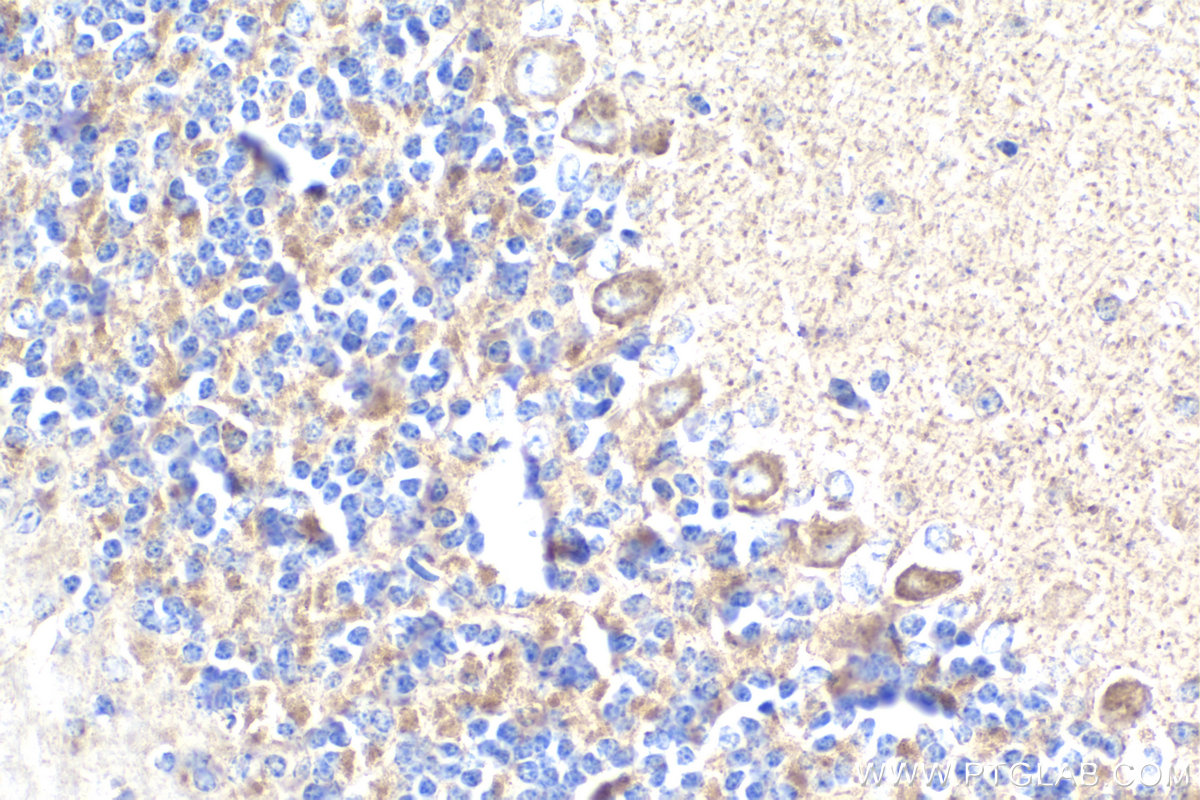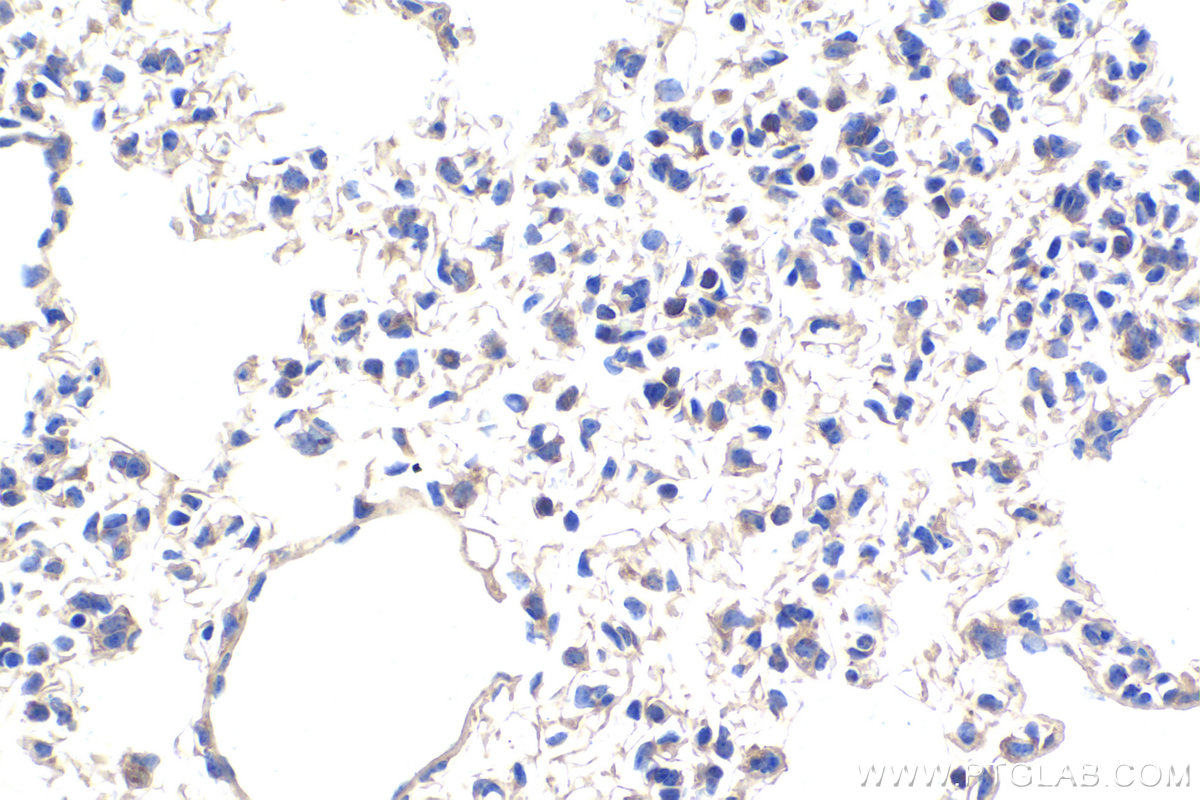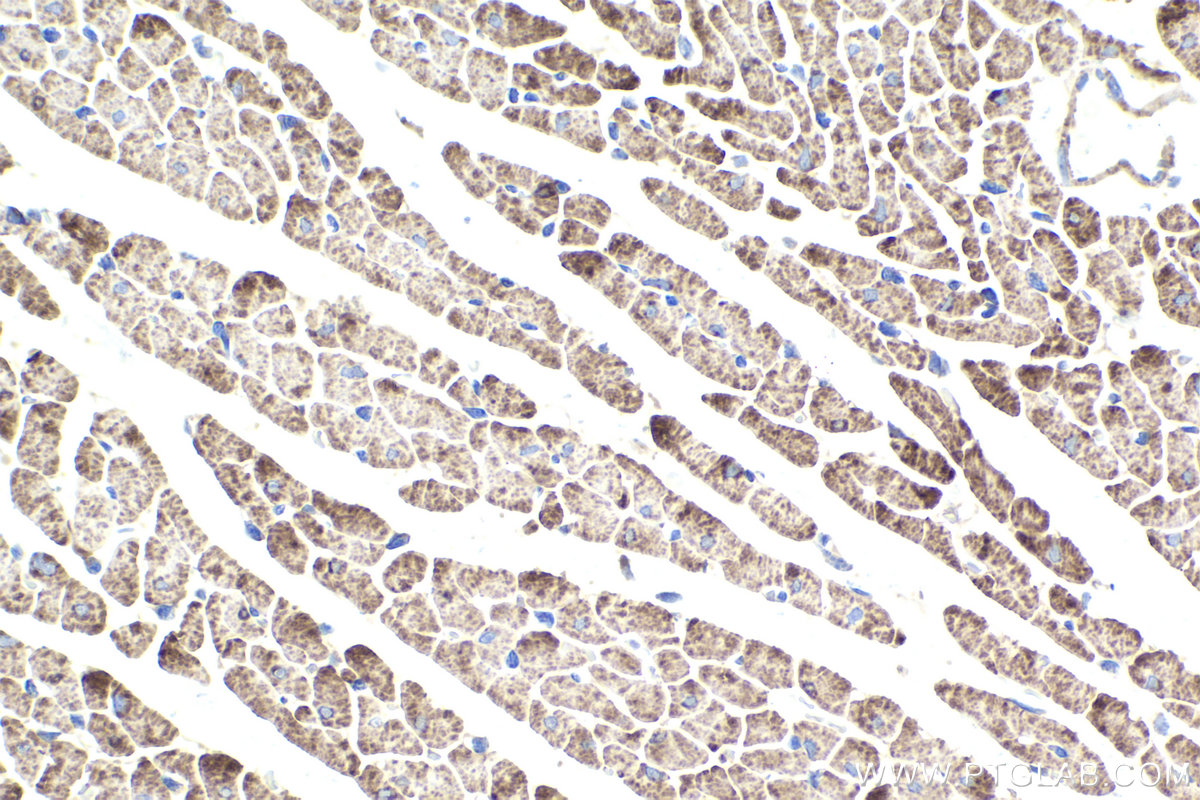WB Figures
WB analysis using 68259-1-Ig (same clone as 68259-1-PBS)
Various lysates were subjected to SDS PAGE followed by western blot with 68259-1-Ig (CHCHD3 antibody) at dilution of 1:20000 incubated at room temperature for 1.5 hours. This data was developed using the same antibody clone with 68259-1-PBS in a different storage buffer formulation.
WB analysis of HeLa using 68259-1-Ig (same clone as 68259-1-PBS)
WB result of CHCHD3 antibody (68259-1-Ig; 1:10000; incubated at room temperature for 1.5 hours) with sh-Control and sh-CHCHD3 transfected HeLa cells. This data was developed using the same antibody clone with 68259-1-PBS in a different storage buffer formulation.
WB analysis using 68259-1-Ig (same clone as 68259-1-PBS)
Various lysates were subjected to SDS PAGE followed by western blot with 68259-1-Ig (CHCHD3 antibody) at dilution of 1:20000 incubated at room temperature for 1.5 hours. This data was developed using the same antibody clone with 68259-1-PBS in a different storage buffer formulation.
IHC staining of human lung cancer using 68259-1-Ig (same clone as 68259-1-PBS)
Immunohistochemical analysis of paraffin-embedded human lung cancer tissue slide using 68259-1-Ig (CHCHD3 antibody) at dilution of 1:1000 (under 10x lens). Heat mediated antigen retrieval with Tris-EDTA buffer (pH 9.0). This data was developed using the same antibody clone with 68259-1-PBS in a different storage buffer formulation.
IHC staining of human lung cancer using 68259-1-Ig (same clone as 68259-1-PBS)
Immunohistochemical analysis of paraffin-embedded human lung cancer tissue slide using 68259-1-Ig (CHCHD3 antibody) at dilution of 1:1000 (under 40x lens). Heat mediated antigen retrieval with Tris-EDTA buffer (pH 9.0). This data was developed using the same antibody clone with 68259-1-PBS in a different storage buffer formulation.
IHC staining of human lung using 68259-1-Ig (same clone as 68259-1-PBS)
Immunohistochemical analysis of paraffin-embedded human lung tissue slide using 68259-1-Ig (CHCHD3 antibody) at dilution of 1:1000 (under 10x lens). Heat mediated antigen retrieval with Tris-EDTA buffer (pH 9.0). This data was developed using the same antibody clone with 68259-1-PBS in a different storage buffer formulation.
IHC staining of human lung using 68259-1-Ig (same clone as 68259-1-PBS)
Immunohistochemical analysis of paraffin-embedded human lung tissue slide using 68259-1-Ig (CHCHD3 antibody) at dilution of 1:1000 (under 40x lens). Heat mediated antigen retrieval with Tris-EDTA buffer (pH 9.0). This data was developed using the same antibody clone with 68259-1-PBS in a different storage buffer formulation.
IHC staining of mouse cerebellum using 68259-1-Ig (same clone as 68259-1-PBS)
Immunohistochemical analysis of paraffin-embedded mouse cerebellum tissue slide using 68259-1-Ig (CHCHD3 antibody) at dilution of 1:1000 (under 10x lens). Heat mediated antigen retrieval with Tris-EDTA buffer (pH 9.0). This data was developed using the same antibody clone with 68259-1-PBS in a different storage buffer formulation.
IHC staining of mouse cerebellum using 68259-1-Ig (same clone as 68259-1-PBS)
Immunohistochemical analysis of paraffin-embedded mouse cerebellum tissue slide using 68259-1-Ig (CHCHD3 antibody) at dilution of 1:1000 (under 40x lens). Heat mediated antigen retrieval with Tris-EDTA buffer (pH 9.0). This data was developed using the same antibody clone with 68259-1-PBS in a different storage buffer formulation.
IHC staining of mouse lung using 68259-1-Ig (same clone as 68259-1-PBS)
Immunohistochemical analysis of paraffin-embedded mouse lung tissue slide using 68259-1-Ig (CHCHD3 antibody) at dilution of 1:1000 (under 10x lens). Heat mediated antigen retrieval with Tris-EDTA buffer (pH 9.0). This data was developed using the same antibody clone with 68259-1-PBS in a different storage buffer formulation.
IHC staining of mouse lung using 68259-1-Ig (same clone as 68259-1-PBS)
Immunohistochemical analysis of paraffin-embedded mouse lung tissue slide using 68259-1-Ig (CHCHD3 antibody) at dilution of 1:1000 (under 40x lens). Heat mediated antigen retrieval with Tris-EDTA buffer (pH 9.0). This data was developed using the same antibody clone with 68259-1-PBS in a different storage buffer formulation.
IHC staining of rat cerebellum using 68259-1-Ig (same clone as 68259-1-PBS)
Immunohistochemical analysis of paraffin-embedded rat cerebellum tissue slide using 68259-1-Ig (CHCHD3 antibody) at dilution of 1:1000 (under 10x lens). Heat mediated antigen retrieval with Tris-EDTA buffer (pH 9.0). This data was developed using the same antibody clone with 68259-1-PBS in a different storage buffer formulation.
IHC staining of rat cerebellum using 68259-1-Ig (same clone as 68259-1-PBS)
Immunohistochemical analysis of paraffin-embedded rat cerebellum tissue slide using 68259-1-Ig (CHCHD3 antibody) at dilution of 1:1000 (under 40x lens). Heat mediated antigen retrieval with Tris-EDTA buffer (pH 9.0). This data was developed using the same antibody clone with 68259-1-PBS in a different storage buffer formulation.
IHC staining of rat heart using 68259-1-Ig (same clone as 68259-1-PBS)
Immunohistochemical analysis of paraffin-embedded rat heart tissue slide using 68259-1-Ig (CHCHD3 antibody) at dilution of 1:1000 (under 10x lens). Heat mediated antigen retrieval with Tris-EDTA buffer (pH 9.0). This data was developed using the same antibody clone with 68259-1-PBS in a different storage buffer formulation.
IHC staining of rat heart using 68259-1-Ig (same clone as 68259-1-PBS)
Immunohistochemical analysis of paraffin-embedded rat heart tissue slide using 68259-1-Ig (CHCHD3 antibody) at dilution of 1:1000 (under 40x lens). Heat mediated antigen retrieval with Tris-EDTA buffer (pH 9.0). This data was developed using the same antibody clone with 68259-1-PBS in a different storage buffer formulation.
IHC staining of rat lung using 68259-1-Ig (same clone as 68259-1-PBS)
Immunohistochemical analysis of paraffin-embedded rat lung tissue slide using 68259-1-Ig (CHCHD3 antibody) at dilution of 1:1000 (under 10x lens). Heat mediated antigen retrieval with Tris-EDTA buffer (pH 9.0). This data was developed using the same antibody clone with 68259-1-PBS in a different storage buffer formulation.
IHC staining of rat lung using 68259-1-Ig (same clone as 68259-1-PBS)
Immunohistochemical analysis of paraffin-embedded rat lung tissue slide using 68259-1-Ig (CHCHD3 antibody) at dilution of 1:1000 (under 40x lens). Heat mediated antigen retrieval with Tris-EDTA buffer (pH 9.0). This data was developed using the same antibody clone with 68259-1-PBS in a different storage buffer formulation.

















